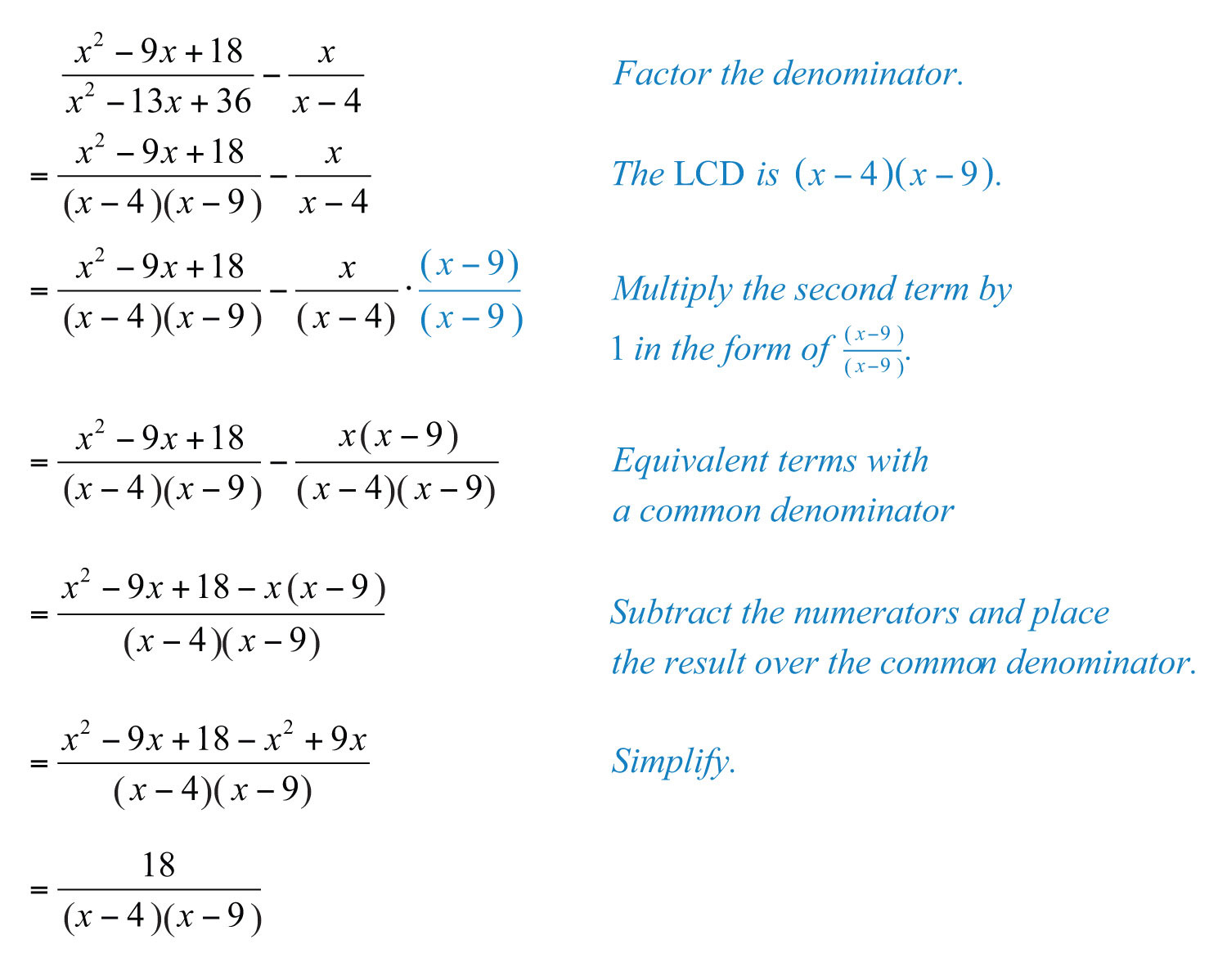


Rational Expressions and Equations
Overview for Rational Expressions and Equations
A look at rational expressions and solving equations from Paul's online notes
Learn about rational equations with examples and video
Lessons on Rational expressions
Lessons on rational equations from Khan Academy
Section 1-6 : Rational Expressions
Lesson on Rational expressions and solving equations
Adding rational expression: unlike denominators
Lessons on adding Rational Expressions
Adding & subtracting rational expressions: like denominators
lessons from Khan Academy on adding and subtracting rational expressions with like denominators
Dividing rational expressions from purple math
Multiplying & dividing rational expressions: monomials
Lessons on Dividing and multiplying rational expressions
Multiplying Rational Expressions
Learn how to multiply rational expressions
Multiplying Rational Expressions
Overview on Multiplying Rational Expressions by cliffnotes
Multiplying Rational Expressions
Pdf copy of Multiplying rational Numbers
book
A rational expression is nothing more than a fraction in which the numerator and/or the denominator are polynomials.
A rational equation is an equation containing at least one rational expression.
Examples:
Solve:
Solution:
Step 1: Factor all denominators and determine the LCD.

The LCD is (x+2)(x+3).
Step 2: Identify the restrictions. In this case, they are x≠−2 and x≠−3.
Step 3: Multiply both sides of the equation by the LCD. Distribute carefully and then simplify.

Step 4: Solve the resulting equation. Here the result is a quadratic equation. Rewrite it in standard form, factor, and then set each factor equal to 0.

Step 5: Check for extraneous solutions. Always substitute into the original equation, or the factored equivalent. In this case, choose the factored equivalent to check:

Here −2 is an extraneous solution and is not included in the solution set. It is important to note that −2 is a restriction.
Answer: The solution is 4.
Problem retrieved from
Saylor Academy: 7.5 Solving Rational Equations
Lesson on Solving equations with Rational Expressions
Adding and Subtracting Rational Expressions
If the two rational expressions that you want to add or subtract have the same denominator you just add/subtract the numerators which each other.
Example:

Example:

Multiply the numerators together than multiply the denominators together.
Factor out the numerator and denominator
make sure you check your constraints which means what numbers will make the denominator 0.
Cancel or reduce the fractions. Remember that to reduce fractions; you can cancel something in the numerator with something in the denominator, but in order to cancel something in the numerator and denominator the two factors must be EXACTLY the same.
Example:
Simplify  .
.

This last answer could be either left in its factored form or multiplied out. If multiplied out, it becomes 
Dividing Rational Expressions:
When dividing a rational expression it is the same as multiplying by the reciprocal of the second set of numbers.
Change the division sign to a multiplication sign and flip (or reciprocate) the fraction after the division sign; essential you need to multiply by the reciprocal.
Cancel or reduce the fractions. Remember that to reduce fractions; you can cancel something in the numerator with something in the denominator, but in order to cancel something in the numerator and denominator the two factors must be EXACTLY the same.
Multiply across using the remaining factors to get final answer
Example: 